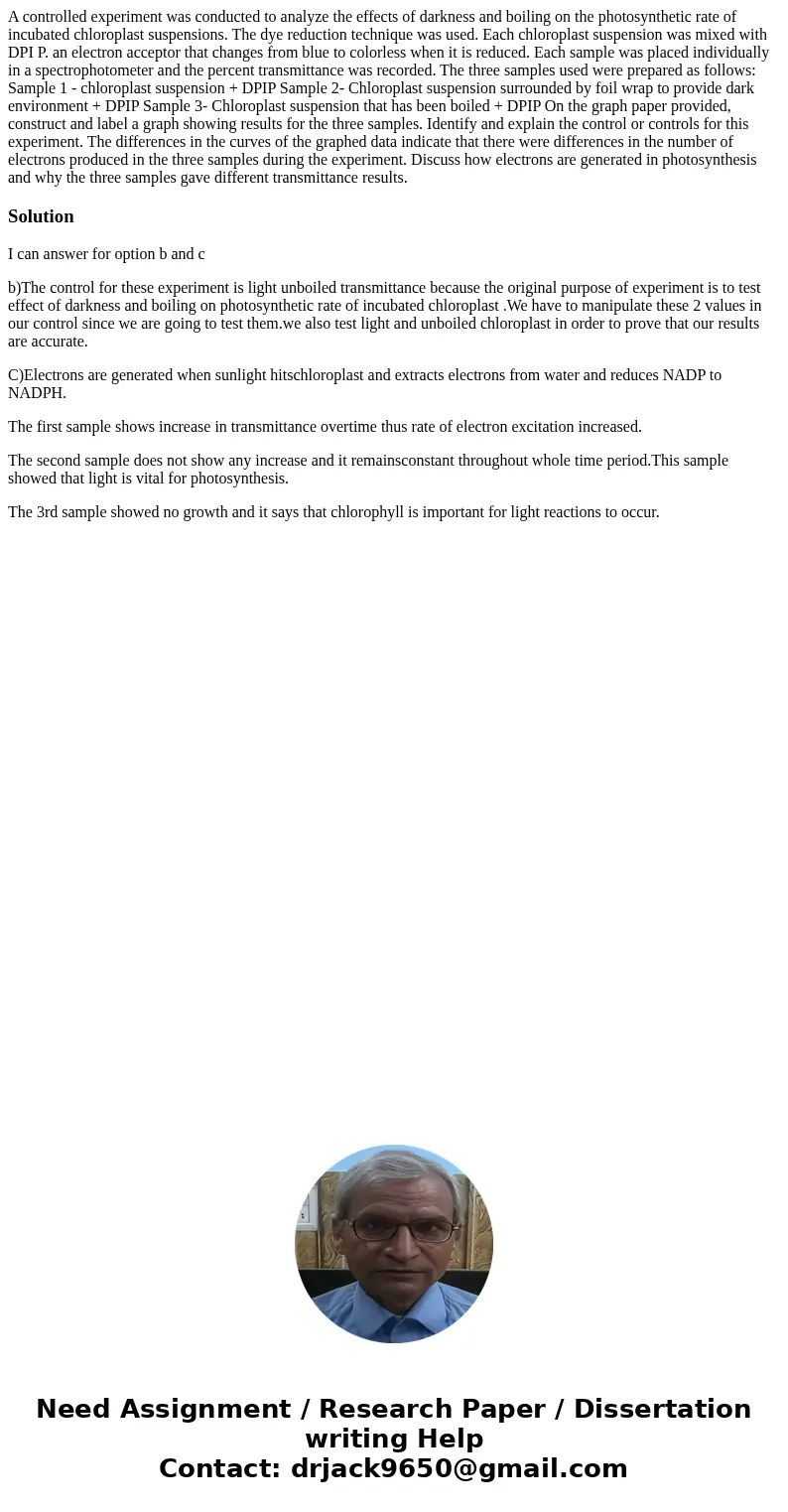A controlled experiment was conducted to analyze the effects of darkness and boiling on the photosynthetic rate of incubated chloroplast suspensions. The dye reduction technique was used. Each chloroplast suspension was mixed with DPI P. an electron acceptor that changes from blue to colorless when it is reduced. Each sample was placed individually in a spectrophotometer and the percent transmittance was recorded. The three samples used were prepared as follows: Sample 1 - chloroplast suspension + DPIP Sample 2- Chloroplast suspension surrounded by foil wrap to provide dark environment + DPIP Sample 3- Chloroplast suspension that has been boiled + DPIP On the graph paper provided, construct and label a graph showing results for the three samples. Identify and explain the control or controls for this experiment. The differences in the curves of the graphed data indicate that there were differences in the number of electrons produced in the three samples during the experiment. Discuss how electrons are generated in photosynthesis and why the three samples gave different transmittance results.
I can answer for option b and c
b)The control for these experiment is light unboiled transmittance because the original purpose of experiment is to test effect of darkness and boiling on photosynthetic rate of incubated chloroplast .We have to manipulate these 2 values in our control since we are going to test them.we also test light and unboiled chloroplast in order to prove that our results are accurate.
C)Electrons are generated when sunlight hitschloroplast and extracts electrons from water and reduces NADP to NADPH.
The first sample shows increase in transmittance overtime thus rate of electron excitation increased.
The second sample does not show any increase and it remainsconstant throughout whole time period.This sample showed that light is vital for photosynthesis.
The 3rd sample showed no growth and it says that chlorophyll is important for light reactions to occur.

 Homework Sourse
Homework Sourse